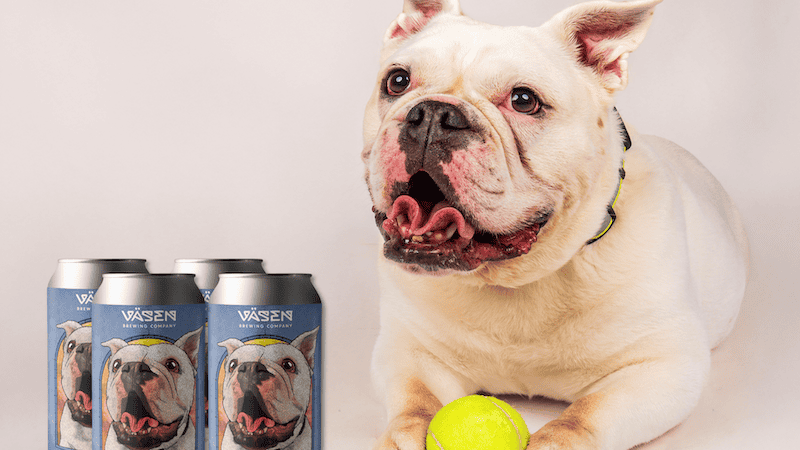He’s a Happy Dog ... Until His Nails Are Clipped!
Clipping a skittish dog’s nails and helping an overweight mama cat

Pet expert Cathy M. Rosenthal answers readers’ concerns about clipping a skittish dog’s nails and about feeding problems with an overweight cat in a multi-cat household. Advice and product recommendations for our furry friends’ health and happiness.
Dear Cathy: We have a wonderful, healthy, 5-year-old lab-shepherd mix who has a great disposition. The only problem we have is clipping his nails. He gets so upset and fights it. He has been prescribed Trazodone 100 mg, and while it calms him slightly, it’s still quite the ordeal. Any suggestions on how to make this easier for my dog? What would make getting nails clipped such a frightening experience?
– Grace, North Massapequa, New York
Dear Grace: Most animals feel stressed, anxious, and downright scared when someone tries to cut their nails because somewhere down the line, someone cut the “quick” inside the nail. That is extremely painful and, just like people, animals will do whatever they can to avoid pain. As a result, even the sound of the clippers may make them bolt. Also, if they are not used to someone touching their paws, they will pull away instinctively.
While you can teach an old dog and cat new tricks, this is one of the few areas where early training makes a big difference. Everyone should desensitize new puppies and kittens by touching their paws and putting slight pressure on their pads and nails followed by a reward word, like “awesome,” and a treat. Also, let them examine the nail clippers and hear them opening and closing, followed by the same positive reinforcement. The steps for desensitizing your older dog are the same, but it will take longer to accomplish, so please be patient.
Once you feel your dog has been desensitized, you can try to cut his nails. Be sure you know how to do it properly. Ask your vet’s office for a lesson or find a video that shows you how. Then cut only one nail the first time, say your dog’s reward word, and give your dog a treat. Repeat this daily nail trim doing just one nail trim at a time followed by positive reinforcement until you have done them all. Once you have reached that milestone, you can do an entire paw one day and another paw the next.
There also are Dremel tools you can use to grind your dog’s nails down. While painless, if a dog isn’t used to having his paws handled or isn’t accustomed to the sound and feel of the Dremel, he will likely resist.
If after several months of focused training, you don’t see any improvement, take your dog to the vet to get his nails trimmed. They can do it quickly and correctly, and your dog doesn’t have to connect you to the experience ever again.
8 safe plants for households with cats
 Dear Cathy: Last summer, a mama cat and four babies took up residence in my backyard. I could not find a shelter to take them to, so they eventually came into my house and I still have them today. I had the mama cat spayed and, shortly thereafter, she began to balloon. She has become very obese, and I am not sure how to deal with it. The cats get one small can of wet food in the morning and sometimes a smaller can for dinner. They always have water and dry food most of the time. I know I should probably remove the dry food, but the four babies nibble at it on a regular basis. Even the mama cat doesn’t gorge on it. Any suggestions for getting her weight down?
Dear Cathy: Last summer, a mama cat and four babies took up residence in my backyard. I could not find a shelter to take them to, so they eventually came into my house and I still have them today. I had the mama cat spayed and, shortly thereafter, she began to balloon. She has become very obese, and I am not sure how to deal with it. The cats get one small can of wet food in the morning and sometimes a smaller can for dinner. They always have water and dry food most of the time. I know I should probably remove the dry food, but the four babies nibble at it on a regular basis. Even the mama cat doesn’t gorge on it. Any suggestions for getting her weight down?
– Fran, Catasauqua, Pennsylvania
Dear Fran: Just like people, some dogs and cats are more disposed to gain weight. First, make sure she has a clean bill of health and the weight is not the result of another problem. Second, play with her for at least 10 minutes three times a day. Most people don’t play with cats enough, and as adults, they put on weight. Use a laser pointer or other toy that will get her chasing it.
Finally, don’t cut back on her food. Instead, change her food to a weight-control diet so she gets the same quantity but fewer calories. There are many choices today. The hard part will be keeping her from eating the kitten’s food and vice versa. You can buy a microchip-controlled cat feeder for each of the cats that will only open when the corresponding microchip number is sitting in front of it. If that is not in your budget, eliminate the free feeding and feed them at specific times each day and in separate rooms. They will get used to the new routine.
Cathy M. Rosenthal is a longtime animal advocate, author, columnist, and pet expert who has more than 25 years in the animal welfare field. Send your pet questions, stories, and tips to cathy@petpundit.com. Please include your name, city, and state. You can follow her @cathymrosenthal.
© Tribune Content Agency, LLC.
As an Amazon Associate, Boomer Magazine earns from qualifying purchases of linked products.



